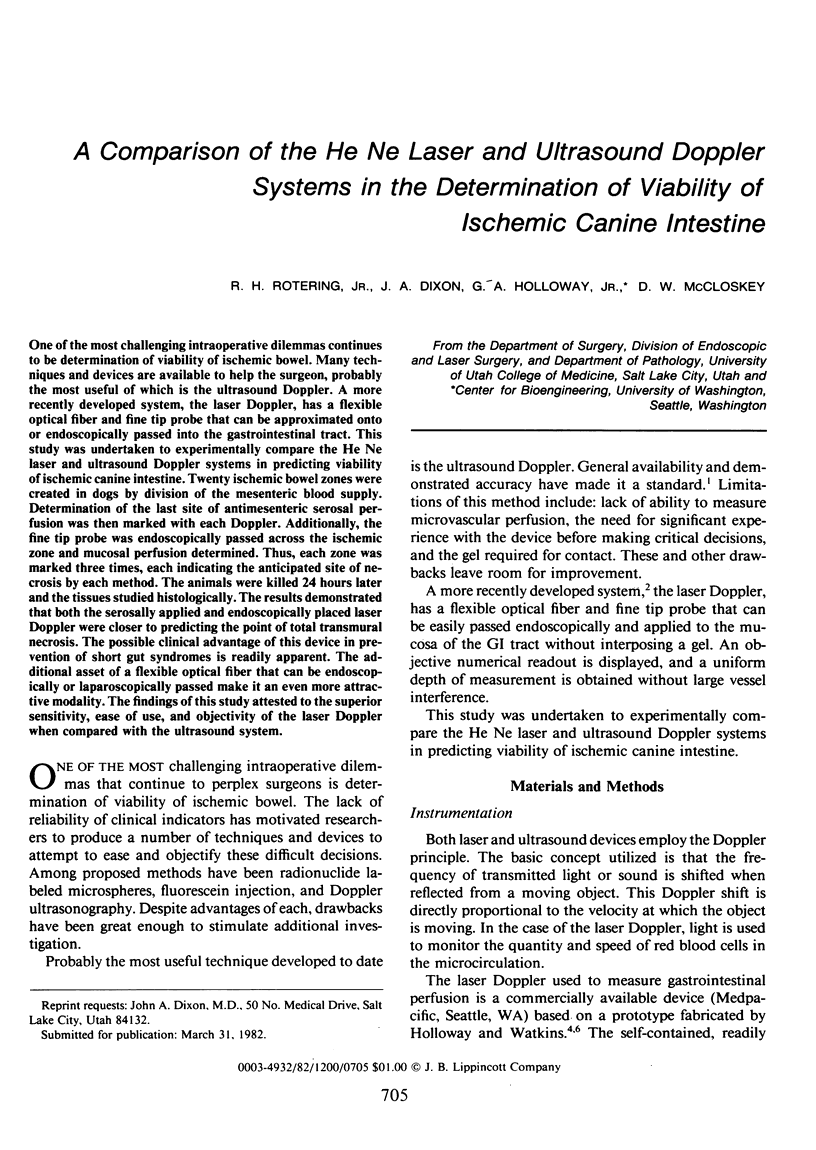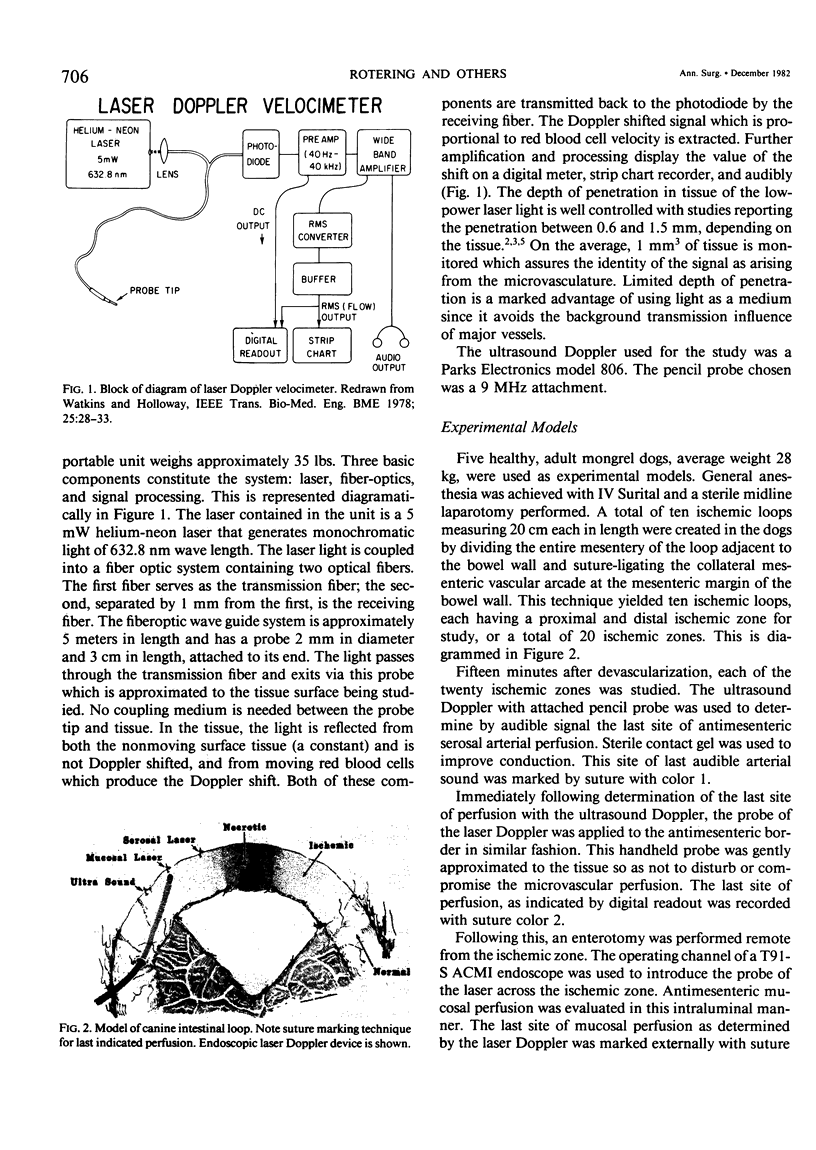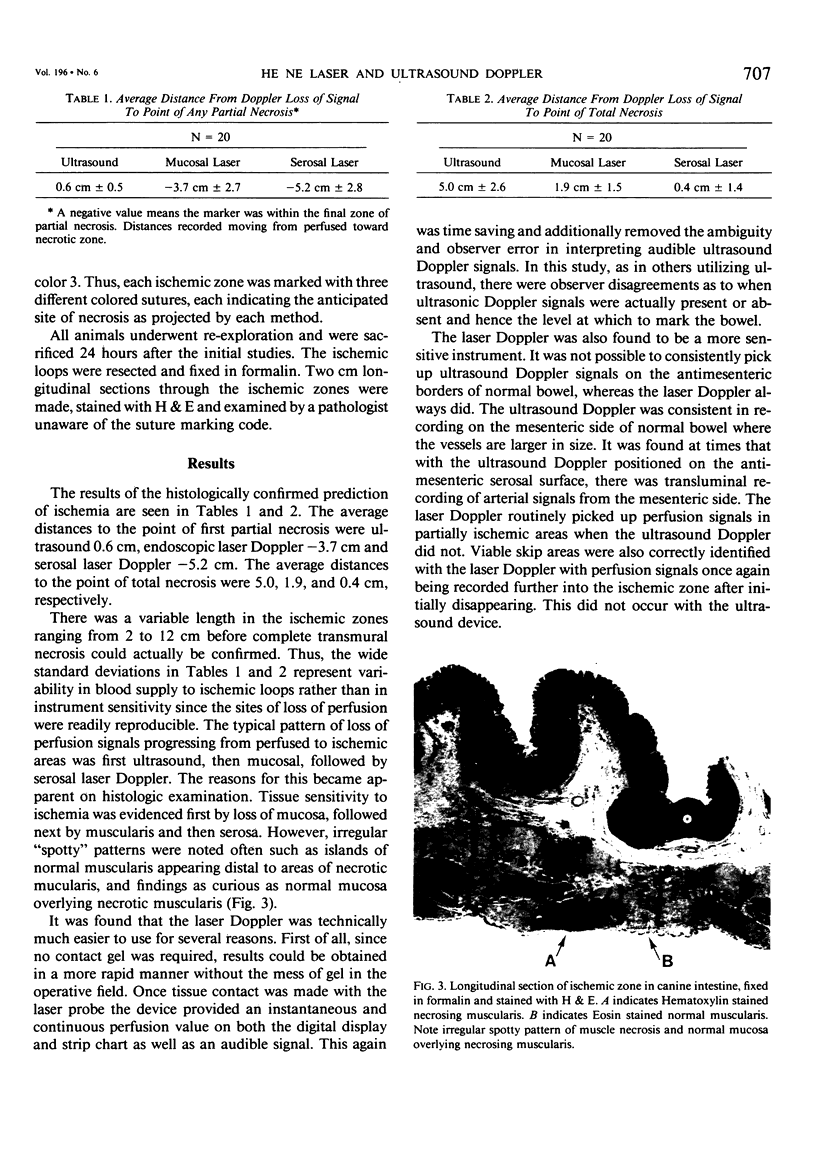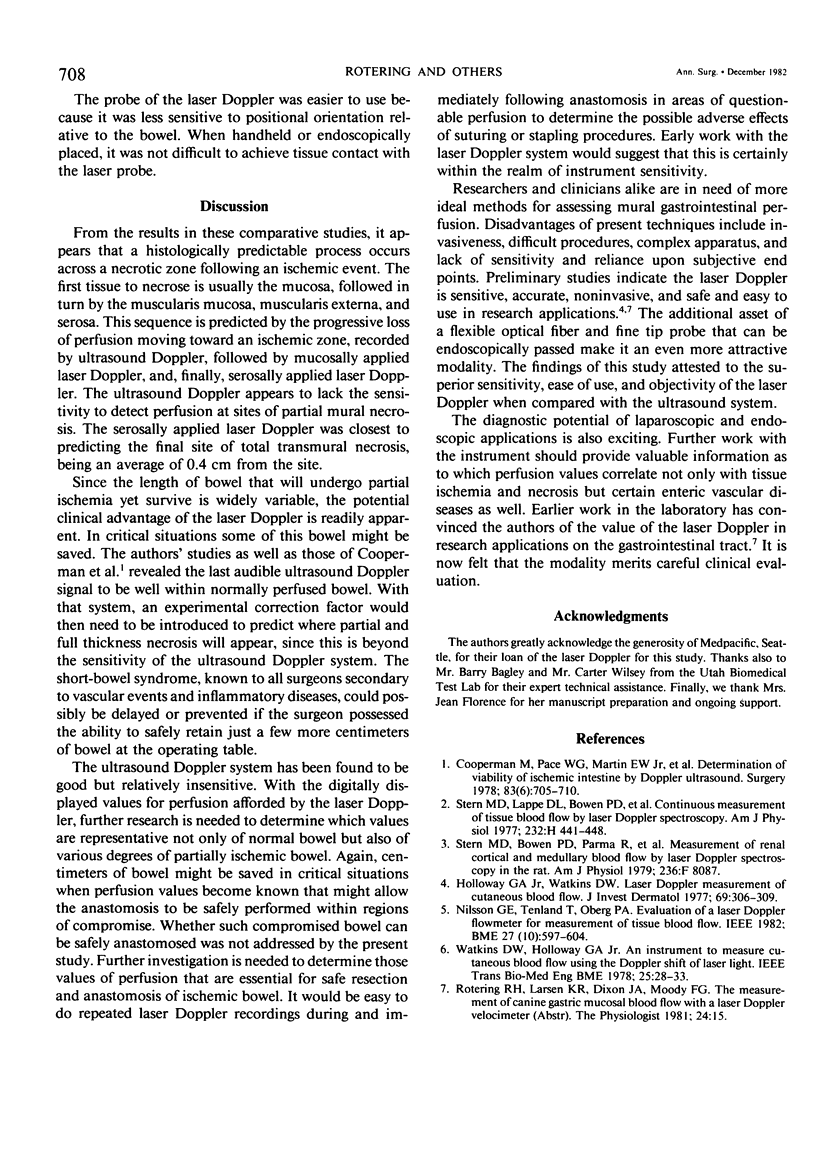Abstract
One of the most challenging intraoperative dilemmas continues to be determination of viability of ischemic bowel. Many techniques and devices are available to help the surgeon, probably the most useful of which is the ultrasound Doppler. A more recently developed system, the laser Doppler, has a flexible optical fiber and fine tip probe that can be approximated onto or endoscopically passed into the gastrointestinal tract. This study was undertaken to experimentally compare the He Ne laser and ultrasound Doppler systems in predicting viability of ischemic canine intestine. Twenty ischemic bowel zones were created in dogs by division of the mesenteric blood supply. Determination of the last site of antimesenteric serosal nor fusion was then marked with each Doppler. Additionally, the fine tip probe was endoscopically passed across the ischemic zone and mucosal perfusion determined. Thus, each zone was marked three times, each indicating the anticipated site of necrosis by each method. The animals were killed 24 hours later and the tissues studied histologically. The results demonstrated that both the serosally applied and endoscopically placed laser Doppler were closer to predicting the point of total transmural necrosis. The possible clinical advantage of this device in prevention of short gun syndromes is readily apparent. The additional asset of a flexible optical fiber than can be endoscopically or laparoscopically passed make it an even more attractive modality. The findings of this study attested to the superior sensitivity, ease of use, and objectivity of the laser Doppler when compared with the ultrasound system.
Full text
PDF



Images in this article
Selected References
These references are in PubMed. This may not be the complete list of references from this article.
- Cooperman M., Pace W. G., Martin E. W., Jr, Pflug B., Keith L. M., Jr, Evans W. E., Carey L. C. Determination of viability of ischemic intestine by Doppler ultrasound. Surgery. 1978 Jun;83(6):705–710. [PubMed] [Google Scholar]
- Holloway G. A., Jr, Watkins D. W. Laser Doppler measurement of cutaneous blood flow. J Invest Dermatol. 1977 Sep;69(3):306–309. doi: 10.1111/1523-1747.ep12507665. [DOI] [PubMed] [Google Scholar]
- Nilsson G. E., Tenland T., Oberg P. A. Evaluation of a laser Doppler flowmeter for measurement of tissue blood flow. IEEE Trans Biomed Eng. 1980 Oct;27(10):597–604. doi: 10.1109/TBME.1980.326582. [DOI] [PubMed] [Google Scholar]
- Watkins D., Holloway G. A., Jr An instrument to measure cutaneous blood flow using the Doppler shift of laser light. IEEE Trans Biomed Eng. 1978 Jan;25(1):28–33. doi: 10.1109/TBME.1978.326374. [DOI] [PubMed] [Google Scholar]




